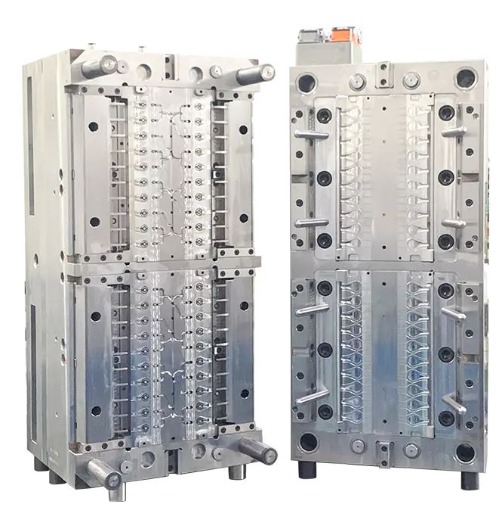Installing a chemical packaging mold typically involves the following steps:
Prepare the work area: Make sure the work area is clean and free from debris. Also, make sure you have all the necessary tools and equipment.Install the mold base: The mold base is the foundation of the mold. It should be placed on a level surface and secured with bolts.Install the core: The core is the part of the mold that forms the inner surface of the package. It should be installed inside the mold base and secured with bolts.Install the cavity: The cavity is the part of the mold that forms the outer surface of the package. It should be installed inside the core and secured with bolts.Connect the cooling system: The cooling system is an important part of the mold, as it helps to ensure that the package cools evenly and solidifies properly. Connect the cooling lines to the mold and test the system.Install the ejector system: The ejector system is used to remove the finished package from the mold. Install the ejector pins and test the system.Install the hot runner system (if applicable): If the mold uses a hot runner system, install it and connect the appropriate electrical and hydraulic connections.Test the mold: Before starting production, test the mold to make sure everything is working properly. Run a test cycle with scrap material to ensure the package is being formed correctly.
Start production: Once the mold is installed and tested, it is ready for production. Follow the appropriate procedures for operating the mold and producing the desired packages.Besides,Chemical packaging moulds play an essential role in the production of chemical packaging products such as bottles, containers, and other similar items. These moulds are designed to create specific shapes and sizes of packaging that are required by chemical manufacturers to store, transport and sell their products.
The primary function of chemical packaging moulds is to form the desired shape of the packaging product. The moulds are made of high-quality materials that can withstand the extreme temperatures and pressures involved in the moulding process. The moulds are also designed to have a smooth and uniform surface finish to ensure the packaging product is aesthetically pleasing and free from defects.Chemical packaging moulds are also designed to be versatile, allowing for a variety of customization options. This enables chemical manufacturers to create unique packaging designs that stand out in the market and help to differentiate their products from their competitors.In addition, chemical packaging moulds are critical for ensuring the safety and integrity of the packaging products. The moulds help to create packaging products that are resistant to leakage and contamination, which is particularly important for chemical products that can be hazardous if not properly contained.
Overall, chemical packaging moulds play a vital role in the production of high-quality, safe, and visually appealing packaging products for the chemical industry.



 English
English Español
Español










